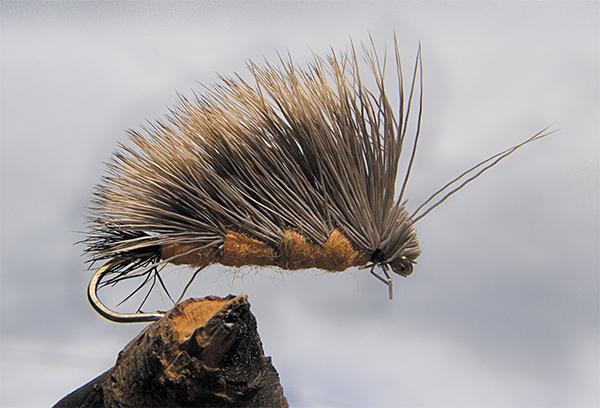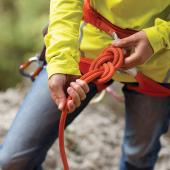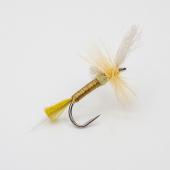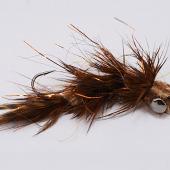Bright-Eyed and Bushy-Tailed
Tying the drowned salmonfly.
There are no hard and fast rules when it comes to timing the salmonfly hatch in southwestern Montana. However, the Fourth of July in Livingston generally arrives with clearing water on the Yellowstone and large bugs in the air. Not to mention a sudden influx of RVs trundling down highway 89 toward the Park and skintight-Wrangler-wearing, wannabe cowboys here for the annual rodeo/sunburn/beerfest at the fairgrounds.
This time of year, standard procedure calls for banging the banks with bushy dry flies and using heavy tippet for ripping errant casts out of the willows. Even with the heavy tippet, I lose flies, lots of them. Although I always plan on tying a boxful in the winter, it never quite turns out that way and inevitability when the bugs start to pop I am unprepared. When I find myself at the vise late in the night, tying feverishly for the next day, this is the fly I tie.
Materials
Hook: Dai-Riki #700 sz 6-8
Thread: 6/0 Black
Tail: Black Elk Hair-gape length
Wing: Four Individual Clumps of Dark Elk Hair, evenly spaced
Body: #11 Orange Fly-Rite Dubbing
Head: Butts of final clump of Dark Elk Hair
Instructions
1. Cover the hook shank with thread and tie in the deer hair for the tail.
2. Make two wraps of dubbing to cover the tail tie-in point.
3. Coat the hook shank with Zap-a-Gap and tie in a stacked clump of elk hair about the width of a pencil, so it angles back from the shank.
4. Cover the tie-in point with a couple of dubbing wraps. Repeat until you have attached four clumps of elk hair or have reached the eye of the hook.
5. On the last bunch of elk hair, flare the butts slightly to form a head and tie off. That's it. Sometimes I don't even bother using a hair-evener to align the tips; the slightly messier fly works just as well. Don't let the lack of rubber legs and bells and whistles turn you off. The profile as seen from below by a trout is the important thing, and in this pattern it is almost perfect.
Technique
The drowned salmonfly differs from most other stonefly patterns in that instead of using foam and heavy hackle to make it ride high, a simple elk-hair wing over a dubbed body allows the fly to ride flush in the surface film if dressed, or just under the surface if no floatant is used. Pteronarcys californica is a big, nasty, clumsy, critter, and so many drown that larger trout often take advantage of the easy meals drifting down to them instead of expending energy in sometimes unsuccessful attempts to nab them off the surface. Usually I will try to cover both situations at once and tie on a high-floating imitation (such as Scott Sanchez's Mystery Meat Salmonfly) as a lead fly and then attach the drowned salmonfly as a dropper.
This pattern is also highly effective when tied on a smaller hook with yellowish dubbing to imitate a golden stone. I have even used it as a low-riding hopper pattern late in the summer.
Callan Wink works at Dan Bailey's Fly Shop in Livingston.












